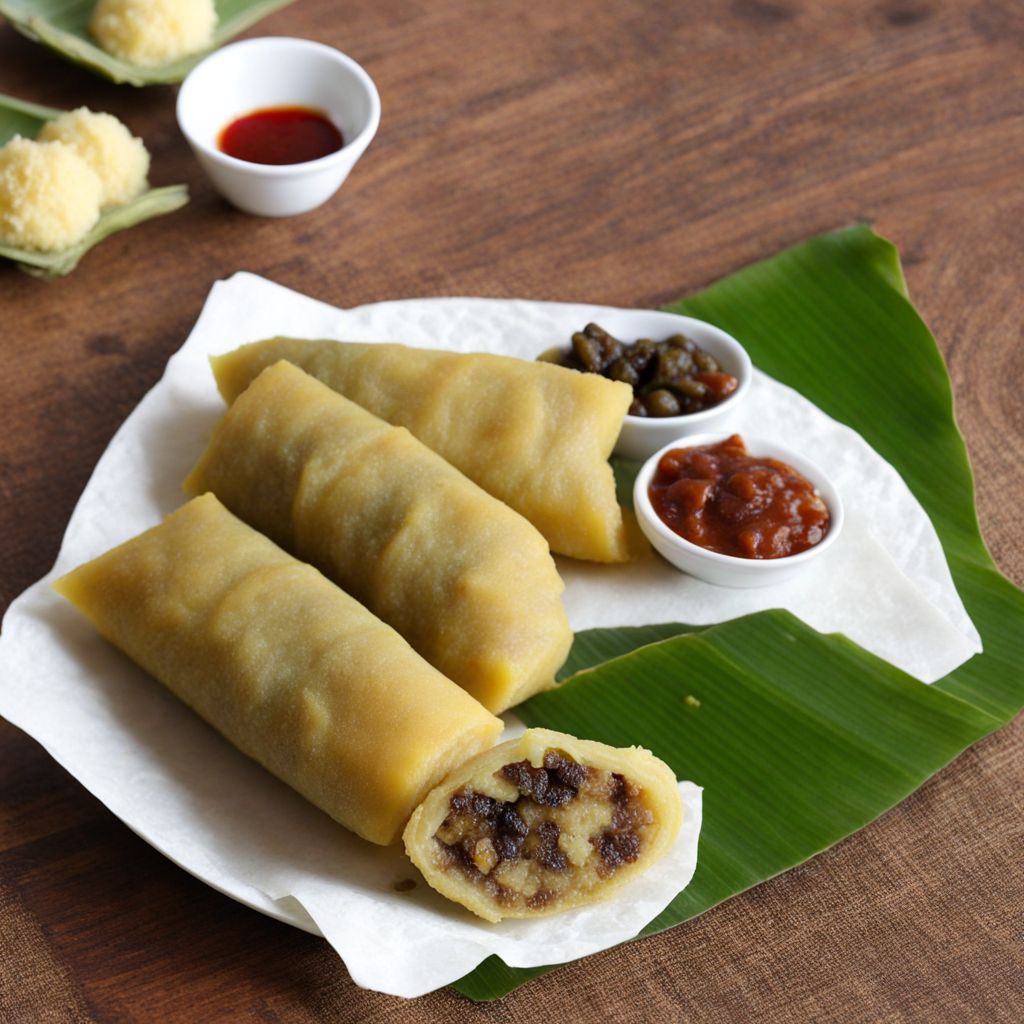Trini Chili
Trini Chili is a vibrant and flavorful dish that hails from the beautiful twin-island nation of Trinidad and Tobago. This culinary delight is a unique fusion of spices and fresh ingredients, showcasing the island's rich cultural heritage. At its core, Trini Chili typically features a base of minced meat, often beef or chicken, which is seasoned with a medley of spices including garlic, cumin, and the iconic Caribbean Scotch bonnet pepper. This pepper not only imparts heat but also adds a distinctive fruity flavor that elevates the dish to new heights. What sets Trini Chili apart is its incorporation of local vegetables and herbs, such as bell peppers, onions, and fresh cilantro, which contribute to both the taste and texture. Often served with a side of rice or roti, this dish provides a satisfying meal that is both hearty and wholesome. The balance of spices and the freshness of the ingredients create a symphony of flavors that dance on your palate, making every bite an adventure. Trini Chili is not just food; it's an experience that embodies the spirit of Trinidad and Tobago’s diverse culinary landscape. Whether enjoyed at a family gathering or a local festival, this dish brings people together, reflecting the warmth and hospitality of the island's culture. For those seeking to explore new tastes, Trini Chili offers a perfect introduction to the bold and exciting flavors of Caribbean cuisine.
How It Became This Dish
The History of Trini Chili: A Flavorful Legacy of Trinidad and Tobago #### Origins: A Melting Pot of Cultures Trinidad and Tobago, a twin-island nation nestled in the southern Caribbean, boasts a rich tapestry of cultural influences, which is vividly reflected in its culinary landscape. Among the myriad flavors that characterize this vibrant cuisine, Trini chili—a fiery condiment made from locally grown peppers—holds a special place. To understand the origins of Trini chili, one must first appreciate the diverse cultural heritage of the islands. The history of Trinidad and Tobago is marked by the convergence of various ethnic groups, including Indigenous peoples, Spanish colonizers, African slaves, French planters, East Indian immigrants, and Chinese and Syrian traders. Each group brought its own culinary traditions, which intermingled to form the unique food culture we see today. The introduction of chili peppers can be traced back to Indigenous peoples, who utilized a variety of native plants for both culinary and medicinal purposes. The arrival of European colonizers and their trade routes helped introduce new species of pepper, ultimately leading to the cultivation of the fiery chili peppers we now associate with Trinidadian cuisine. #### Cultural Significance: More Than Just Spice In Trinidad and Tobago, food is a central aspect of cultural identity, and Trini chili is no exception. It embodies the spirit of the islands, where flavors are bold, and hospitality runs deep. Trini chili is not just a condiment; it is a symbol of the vibrant, communal nature of Trinidadian life. It is commonly served with almost every meal, from traditional dishes like roti and doubles to grilled meats and seafood. The chili pepper itself, particularly the Scotch bonnet variety, is celebrated not only for its heat but also for its complex flavor profile. The Scotch bonnet has become emblematic of Caribbean cuisine, often used in chutneys, sauces, and marinades. Trini chili is typically a blend of finely chopped Scotch bonnet peppers, vinegar, garlic, and various spices, resulting in a tangy and fiery concoction that enhances the flavors of any dish. #### Development Over Time: The Evolving Palate As Trinidad and Tobago became more cosmopolitan in the 20th century, the development of Trini chili mirrored the evolving palate of its people. The rise of food stalls and local markets provided the perfect environment for chili-based condiments to flourish. Street vendors began crafting their own versions, each with unique twists that reflected their personal preferences and regional influences. The 1970s and 1980s marked a significant period for Trini chili, as the islands experienced a culinary renaissance. Food festivals and competitions celebrated local ingredients, and chefs began experimenting with traditional recipes, incorporating contemporary techniques and flavors. This era saw the emergence of bottled versions of Trini chili, making it accessible to a wider audience beyond the shores of Trinidad and Tobago. These bottled sauces began to gain popularity internationally, leading to a surge of interest in Caribbean cuisine. The 21st century has witnessed a further evolution in the culinary landscape of Trinidad and Tobago. With the advent of social media, food bloggers and influencers have played a crucial role in promoting local flavors. The vibrant imagery of dishes adorned with Trini chili has captured the attention of food enthusiasts worldwide, leading to an increased appreciation for the spice and its cultural significance. Additionally, the rise of fusion cuisine has prompted chefs to explore innovative ways to incorporate Trini chili into international dishes, showcasing its versatility. #### The Future of Trini Chili As global interest in Caribbean cuisine continues to grow, the future of Trini chili looks promising. The islands' agricultural landscape is being revitalized, with initiatives focusing on sustainable farming practices and the preservation of heirloom pepper varieties. Local farmers are increasingly recognizing the value of cultivating unique chili peppers, ensuring that the flavors of Trinidad and Tobago remain vibrant and diverse. Moreover, the rise of the health-conscious consumer has led to a renewed focus on the health benefits of chili peppers, which are rich in vitamins and antioxidants. As people seek out flavorful yet nutritious options, Trini chili is poised to become an even more integral component of modern diets. With its balance of heat and flavor, it can enhance a variety of dishes while providing potential health benefits. In addition, the culinary tourism sector in Trinidad and Tobago has expanded, inviting visitors to experience the rich flavors of the islands firsthand. Cooking classes and food tours highlighting local ingredients, including Trini chili, allow tourists to engage with the culture in a meaningful way. This not only promotes the use of chili in traditional recipes but also fosters a deeper appreciation for the island's culinary heritage. #### Conclusion: A Spice of Life Trini chili is more than just a condiment; it is a representation of Trinidad and Tobago's dynamic history, cultural diversity, and culinary evolution. From its Indigenous roots to its contemporary manifestations, Trini chili has become a beloved staple that connects generations of Trinidadians and Tobagonians. As the islands continue to celebrate their culinary heritage while embracing innovation, Trini chili will undoubtedly remain a symbol of flavor, community, and resilience—a true spice of life in the Caribbean.
You may like
Discover local flavors from Trinidad And Tobago







